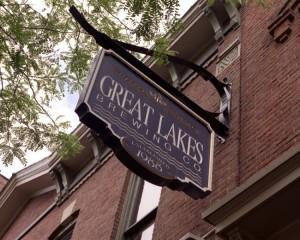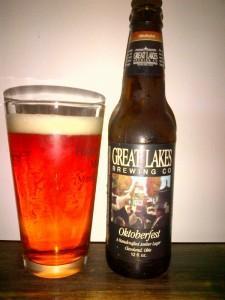 Great Lakes Brewing Company
Great Lakes Brewing Company
Although a number of other cities in the “Rust Belt” took hits beginning in the late 60′s, Cleveland stood out. Not only was it the first major city to default on federal loans (1978), its main waterway, the Cuyahoga River became so dirty and polluted that it erupted in flames. The latter incident was best chronicled in 1972 by Randy Newman in his sarcastic ode to Cleveland, “Burn On,” (later used as the intro for the 1989 movie Major League). It was in that dark economic environment in 1988, that Great Lakes Brewing Company (GLBC) first opened its doors in Cleveland’s historic Ohio City neighborhood. In doing so, it became the first craft brewery, not only in Cleveland, but in Ohio as well. During the ensuing years, Great Lakes Brewing Company expanded its operations to include a brew pub supported by sustainable farming, as well as a number of other educational and environmental projects, helping rebuild a city that was once one of the most successful in the region.
Notably, GLBC supports two sustainable farms: Pint Size Farm (PSF), and Ohio City Farm (OCF). The PSF works in cooperation with the local “living museum,” Hale Farm and Village, and supplies most of the produce cooked at the brew pub. The OCF, a six-acre plot of re-purposed land, is one of the country’s largest contiguous urban farms, and it focuses on urban agriculture, community development, and job training. GLBC “supports the farm with an upfront payment for produce akin to those in community supported agriculture (CSA) arrangements,” notably paying for produce at the start of the season when farmers incur the most costs.
In addition to its sustainable farming initiatives, GLBC also supplies spent grain to local farms, ensures energy efficiency, and recycles anything and everything. In particular, one of their more interesting recycling efforts is the “Fatty Wagon,” a shuttle bus (during baseball games) that runs on straight vegetable oil made from their reclaimed and filtered restaurant oil. GLBC also promotes environmental education in the area by supporting the Burning River Foundation, an organization dedicated to improving, maintaining and celebrating the vitality of Ohio regional freshwater resources, mostly through the Burning River Fest, a yearly eco-conscious festival commemorating the 1969 event mentioned above. Through all of these initiatives, GLBC demonstrates it is truly committed to rebuilding Cleveland and restoring the it to one of its former titles, “The Forest City.”
Beer – Great Lakes Oktoberfest

Indeed, some of us are still steaming in the August heat, but that has not stopped many of the Oktoberfest beers from hitting the shelves with full force. Traditionally brewed in the spring for consumption in the fall, the Oktoberfests’ malty flavors and higher than average alcohol percentage compliment the cooler weather, and the heavier foods that accompany it. It should be noted, though, that Oktoberfest is a proprietary term, much like Champagne or Bourbon. Only breweries within the city limits of Munich can produce a true Oktoberfest beer. (Currently that consists of the six storied breweries Augustiner-Bräu, Hacker-Pschorr-Bräu, Löwenbräu, Paulaner-Bräu, Spatenbräu, Staatliches, and Hofbräu-München.) That being said, most craft breweries have come to release some kind of fall seasonal, although the industry tends to split on the style; some breweries produce sweeter amber ales, while others release traditional amber lagers. GLBC opts for the latter.
The GLBC Oktoberfest pours a nice reddish copper (burnt umber?), that is shockingly clear (see right), with a good two fingers of lacing on top. The smells that come off of this beer are like the fall harvest: fresh baked bread, sweet roasted malt, and maybe even a slight hint of the sweet smell of damp/wet leaves (that’s good). Upon first sip, you are hit with a few flavors, notably sweet caramel accompanied by some mildly bitter hops. The flavors linger a bit, and you can even taste faint hints of apple. The beer finishes with a mellow, hoppy kick. Although leaning on the malty/sweet side, this Oktoberfest has enough hops throughout such that it is quite balanced. It is easy to see how one could put back liter after liter of this without even thinking. Be warned, however, as it clocks in at 6.5% ABV, slightly towards the higher end of a sessionable beer.
Overall, this is an outstanding Oktoberfest and one of the better examples of the style (either American or European) readily available.
Beer Advocate: 4.07/5.00
Rate Beer: 3.37/5.00




